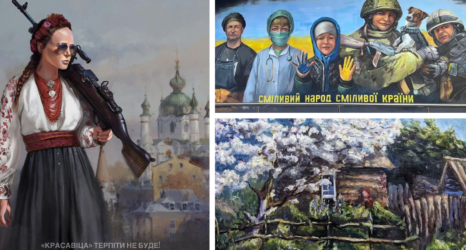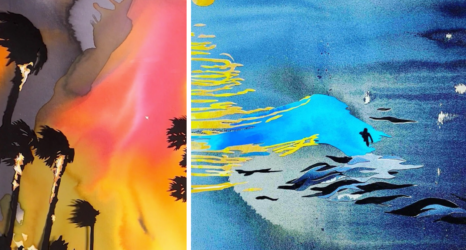Two parallel exhibitions are currently on view at the University of Oxford’s venerable Ashmolean Museum of Art and Archaeology. Titian to Canaletto: Drawing in Venice brings together masterpieces from the 16th to 18th century by some of the greatest early-modern Venetian artists, such as Titian, Tiepolo and Giovanni Battista Piazzetta. Running alongside this is a smaller collection of drawings by the contemporary British painter Jenny Saville (b. 1970), which respond to these earlier works.
As female artists were largely excluded from the canon of Western art history, it is no surprise that all the drawings in the main exhibition are by men. Women’s position in the art world these days is of course much improved, though the June issue of ARTnews, “Women in the Art World,” reports that there is still a way to go. So while it should be energizing to see how a skilled artist practicing today takes part in a visual exchange with the Old Masters, that the artist is female adds extra resonance to the conversation.
Saville’s artistic output to date reveals why she was chosen for the parallel exhibition, Jenny Saville Drawing. After graduating from the Glasgow School of Art in 1992, she was championed by the collector Charles Saatchi and came to public recognition as one of the Young British Artists (YBAs), of which Damien Hirst and Tracey Emin are perhaps the most famous. In contrast to their works, however, which tend towards installation and the use of found objects and other media, Saville is a consummate painter. She is known, in particular, for her early massive-scale oil paintings of the naked, often obese, female body. Conveying a fascination with fat, flesh and the imperfect, the canvases, such as Fulcrum (1999), are confronting, close-up images where oil paint replicates the carnality of bodily mass.
The 16th-century Venetians, Titian (c.1458-90—1576) above all, were the forefathers in the mastery of the life-conveying possibilities of oil paint on canvas. Regardless of subject matter, whether secular or sacred, their paintings palpably glow with rich color and muted light. By modeling forms in subtle tones of black and white, often on blue paper, their drawings are similarly expressive, as a work like Study of a Female Head by Vittore Carpaccio (c.1460-66—c.1525-6) deftly shows. In interviews, Saville has recalled how she was able to study the art of Venice in person when her uncle, who encouraged her to be an artist, took her to the city as a young woman. It seems appropriate, then, that in an era when figurative painting has been somewhat disparaged in the art world, it is such an unapologetic, and painterly, painter of the human body that accompanies the Venetians at the Ashmolean.
This is also not the first time that Saville has stood alongside the Old Masters. In 2012, when her first major U.K. solo show was on view at Modern Art Oxford, the Ashmolean displayed two of her works in its Italian Renaissance room. The reporter Rachel Cooke recorded the artist’s reflection on this event in an interview for The Guardian: “I was standing there the other day, and it’s full of nude women all painted by men. I’m the first woman to show in the room, which is great, but it’s also obscene.” “Actually, it’s not even obscene. It’s just… silly.”
This time around, Saville is exhibiting drawings that reveal her more recent approach of combining the figurative and the abstract. Images like Pastel Bodies, layer line and tonal shadows, creating a tangle of human forms. Its iterative process reveals what the painter has referred to as an interest in fragmented data and the stratification of time. The medium of this drawing—pastel on paper—also raises the possibility that this is Saville’s respectful nod to Rosalba Carriera (1675—1757), one of the few well-known female artists who practiced in early-modern Venice. While the art cognoscenti throughout Europe celebrated Carriera for her eloquent pastel portraits, she is sadly absent from the Titian to Canaletto exhibition.
The layering within Saville’s drawings replicates the historical layers of artistic output present in the main exhibition, which her own body of work builds upon. By taking part in this dialogue with the Venetian Old Masters, Saville adds a welcome female voice to a traditionally patriarchal conversation that has often rendered women artists mute. The painters of Renaissance Venice are known for their innovative, sensual depictions of the female nude (think of Titian’s Venus of Urbino); you’d like to think that they’d relish a female artist’s new perspective on the subject.
Jenny Saville Drawing and Titian to Canaletto: Drawing in Venice are on view at the Ashmolean Museum, Oxford until January 10, 2016.
Get Ms. in your inbox! Click here to sign up for the Ms. magazine newsletter.
Images courtesy of the Ashmolean Museum





